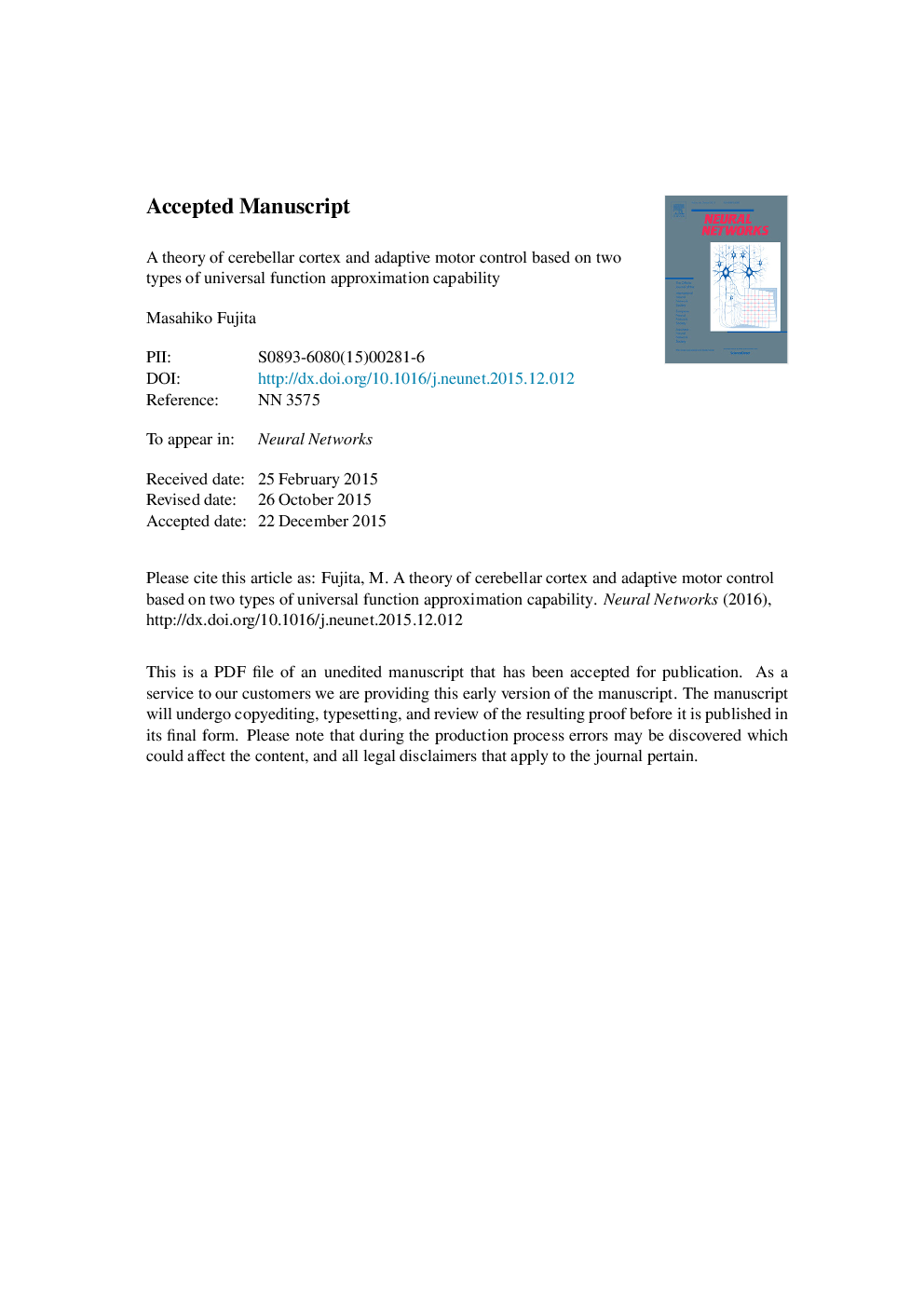| کد مقاله | کد نشریه | سال انتشار | مقاله انگلیسی | نسخه تمام متن |
|---|---|---|---|---|
| 6863226 | 678053 | 2016 | 27 صفحه PDF | دانلود رایگان |
عنوان انگلیسی مقاله ISI
A theory of cerebellar cortex and adaptive motor control based on two types of universal function approximation capability
ترجمه فارسی عنوان
تئوری قشر مخچه و کنترل موتور انطباق بر اساس دو نوع تقریب قابلیت تابع کلی
دانلود مقاله + سفارش ترجمه
دانلود مقاله ISI انگلیسی
رایگان برای ایرانیان
کلمات کلیدی
موضوعات مرتبط
مهندسی و علوم پایه
مهندسی کامپیوتر
هوش مصنوعی
چکیده انگلیسی
Lesions of the cerebellum result in large errors in movements. The cerebellum adaptively controls the strength and timing of motor command signals depending on the internal and external environments of movements. The present theory describes how the cerebellar cortex can control signals for accurate and timed movements. A model network of the cerebellar Golgi and granule cells is shown to be equivalent to a multiple-input (from mossy fibers) hierarchical neural network with a single hidden layer of threshold units (granule cells) that receive a common recurrent inhibition (from a Golgi cell). The weighted sum of the hidden unit signals (Purkinje cell output) is theoretically analyzed regarding the capability of the network to perform two types of universal function approximation. The hidden units begin firing as the excitatory inputs exceed the recurrent inhibition. This simple threshold feature leads to the first approximation theory, and the network final output can be any continuous function of the multiple inputs. When the input is constant, this output becomes stationary. However, when the recurrent unit activity is triggered to decrease or the recurrent inhibition is triggered to increase through a certain mechanism (metabotropic modulation or extrasynaptic spillover), the network can generate any continuous signals for a prolonged period of change in the activity of recurrent signals, as the second approximation theory shows. By incorporating the cerebellar capability of two such types of approximations to a motor system, in which learning proceeds through repeated movement trials with accompanying corrections, accurate and timed responses for reaching the target can be adaptively acquired. Simple models of motor control can solve the motor error vs. sensory error problem, as well as the structural aspects of credit (or error) assignment problem. Two physiological experiments are proposed for examining the delay and trace conditioning of eyelid responses, as well as saccade adaptation, to investigate this novel idea of cerebellar processing.
ناشر
Database: Elsevier - ScienceDirect (ساینس دایرکت)
Journal: Neural Networks - Volume 75, March 2016, Pages 173-196
Journal: Neural Networks - Volume 75, March 2016, Pages 173-196
نویسندگان
Masahiko Fujita,
